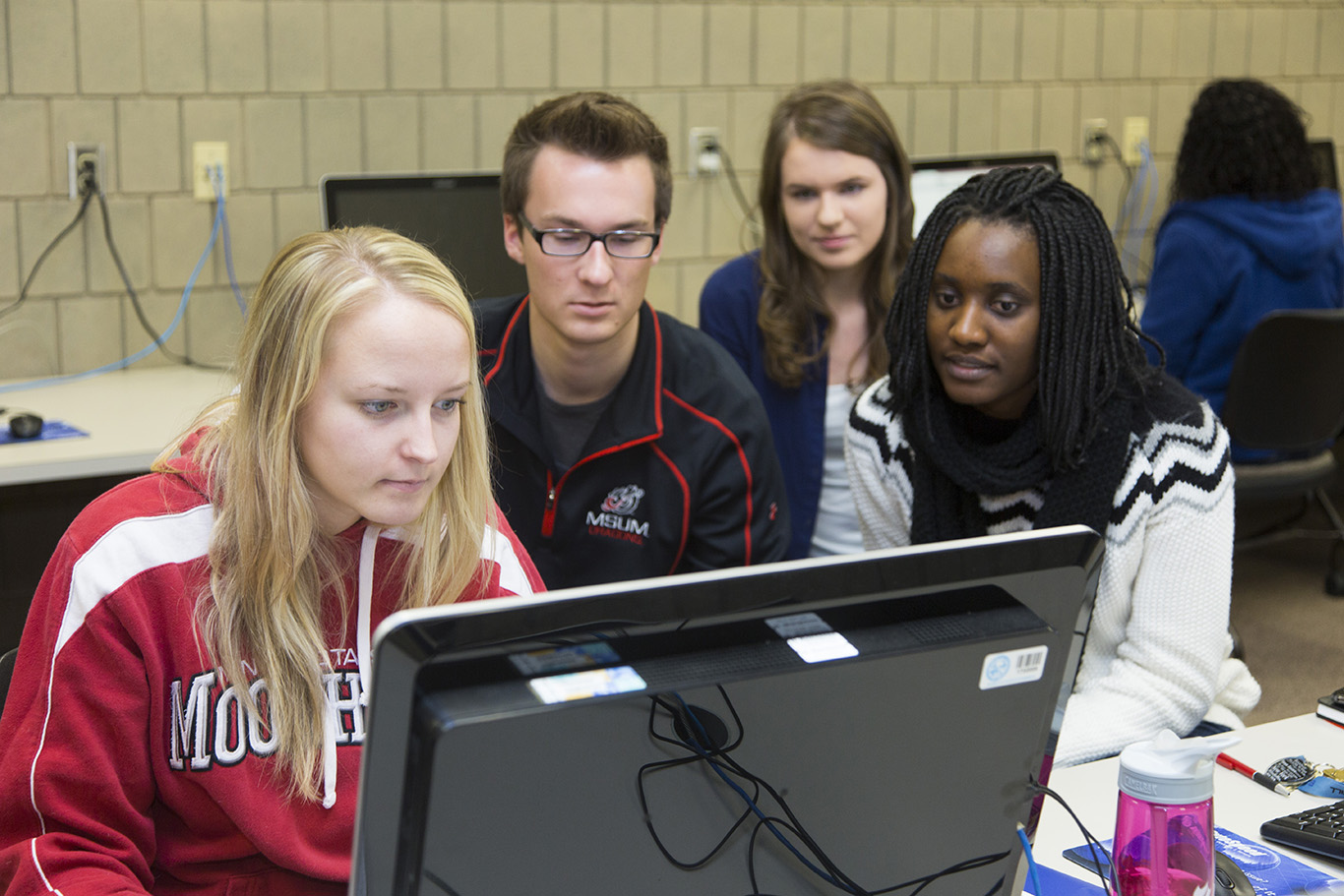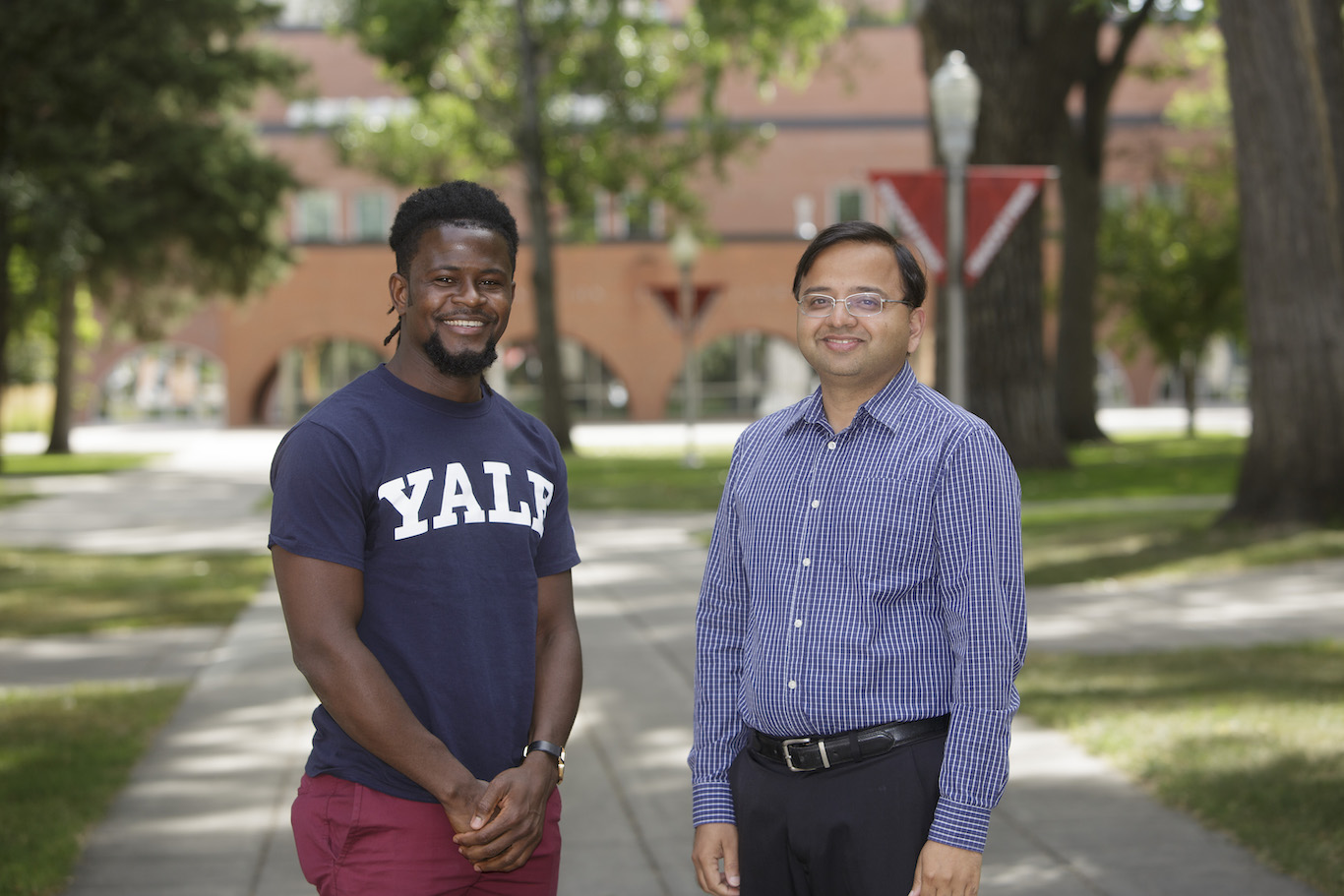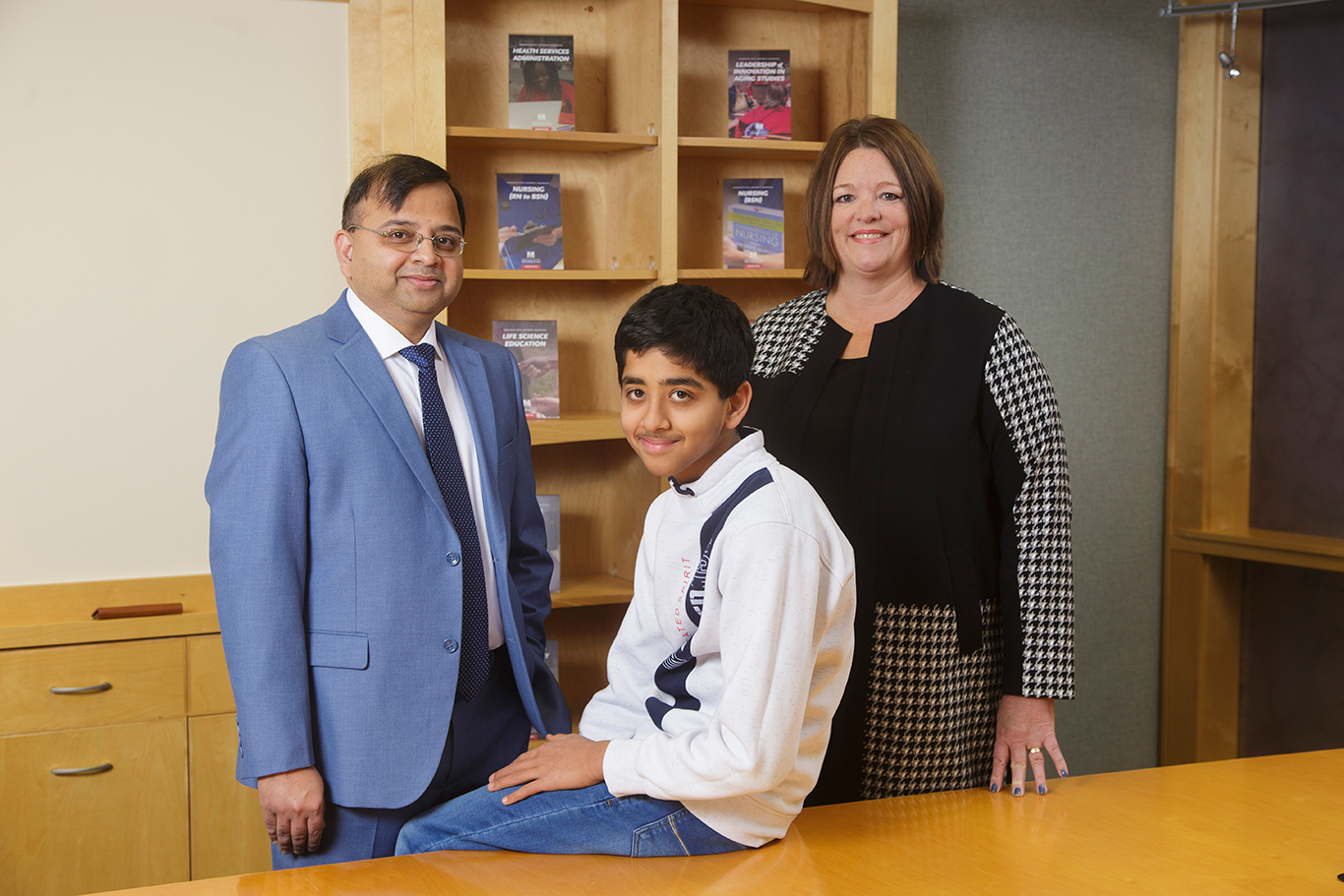Making a Big Difference
As a youngster growing up in his native Ghana, Charles Conduah ’06 (physics and math) watched helplessly as his father fought a courageous but ultimately unsuccessful battle with cancer. “The experience hit me hard and I wanted to find a way I could help people in similar circumstances,” Conduah said.
Today as a certified medical physicist at the University of Minnesota Physicians, Conduah works closely with doctors to create treatment plans for cancer patients and verifies the accuracy of the hospital’s linear accelerator, a multimillion-dollar instrument that precisely delivers high-energy X-rays to treat cancerous tumors.
A unique program aims to encourage more MSUM physics students to follow Conduah into the field of medical physics. The Bachelor of Science degree in physics with emphasis in medical physics is the brainchild of Dr. Steve Lindaas and Dr. Ananda Shastri, both professors in the Department of Physics and Astronomy. It’s one of just a handful of programs nationwide that prepare undergraduates for careers in medical physics.
In launching the program several years ago, “We could see that most students who are interested in physics weren’t thinking about the medical field,” Lindaas said. “But physics is everywhere in medicine, and the program seemed like a great way to introduce students to medical physics, which is a great career.”
The ‘hidden’ field of medicine
Medical physicists apply the principles of physics to medicine, and play a vital role in safely diagnosing and treating patients. Often the #2 member of the oncology team, they develop radiation treatment plans, ensure the proper dose of radiation is administered to the correct location, make sure diagnostic imaging machines are calibrated correctly, and perform a host of other critical duties.
Yet the field remains relatively unknown outside hospital walls, and Lindaas often refers to it as “a hidden field in medicine.” Indeed it was for Libby Hegge ’08 (physics). She discovered medical physics while working a high school internship at a cancer center in her hometown of Watertown, S.D.
“I had no idea what medical physics was at first,” she confessed. “But once I learned more about it, I decided right then that it’s what I wanted to do.”
As a certified radiation physicist in radiation oncology at Sanford Health Roger Maris Cancer in Fargo, N.D., her duties are similar to Conduah’s: helping doctors develop radiation treatment plans for cancer patients and ensuring the safety and accuracy of the hospital’s linear accelerator.
Coursework and connections
The preparation required to become a medical physicist is rigorous and similar to the training physicians receive: a four-year undergraduate degree in physics followed by a two-year graduate program, then a two-year clinical residency followed by a series of intensive board certification exams.
MSUM’s medical physics emphasis aims to blend coursework with hands-on learning to help graduates confidently advance from one stage of preparation to the next, Lindaas says.
“We try to offer courses that are highly relevant to the field and provide experiences that make our students strong candidates for admission to a medical physics graduate program, and then once they’re in the job, be more effective in it,” he said.
Students gain valuable experience through the department’s close relationship with Fargo’s Sanford Health Roger Maris Cancer Center, often touring the facility as part of their classes and some taking on internships. An internship at Sanford Health while an undergraduate student at MSUM helped Hegge earn admission to a graduate program in physics at the University of Kentucky. Master’s degree in hand, she rejoined Sanford for her residency and then accepted a permanent position there.
“The connections my MSUM professors had with Sanford are the reason I was able to land my internship, which served as a springboard for me,” Hegge said. “Without it, there’s no way I’d be doing what I’m doing today.”
Conduah, too, credits his MSUM professors with helping launch his medical physics career. While working as a nanoscience technology researcher after graduation, he received an email from Shastri, his undergraduate advisor, encouraging him to apply for a medical physicist internship at Sanford Health.
“I was fascinated by what they were doing and realized that this was what I wanted to do,” Conduah said.
He then earned a master’s degree from the University of Minnesota and spent six years at Essentia Health before taking his current position at University of Minnesota Physicians.
Conduah and Hegge say the mentoring and guidance they received from their MSUM physics instructors have been vital to their success. “I felt like every physics instructor at MSUM was a mentor to me,” Conduah said. “If I went in to see my advisor and he wasn’t there, I knew I could just go next door and get my questions answered. It’s just one big family.”
“Everyone in the department knows you by name and is always willing to help you. It’s a great environment and a great experience,” Hegge said.
When the bell rings…
The most important part of their jobs, both Conduah and Hegge agree, is the difference they make for those who need it the most.
“Every day I go home feeling blessed knowing that in my own small way I’m helping patients live longer and spend more time with their families,” Conduah said.
For Hegge, a bell located near her office offers a continual reminder of the difference she makes.
“When the bell rings, it means that one of our patients has finally completed treatment,” she said. “It’s such a great feeling.”
This story was first published in Moorhead Magazine, Fall 2016.
Make Sure Your Story Is Heard
Let us know how your life has been changed by being a Dragon: tell us your MSU Moorhead story today!
Send Us Your Story


